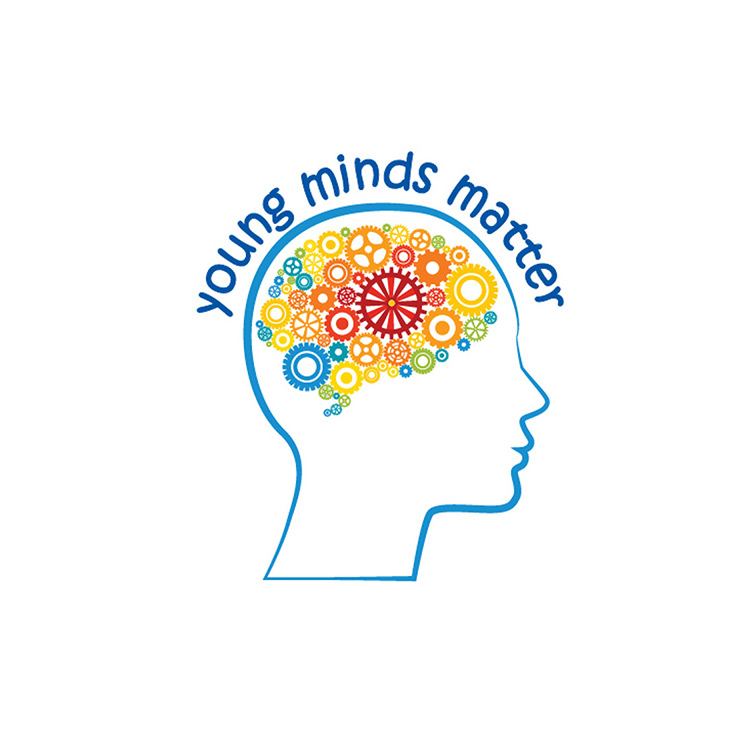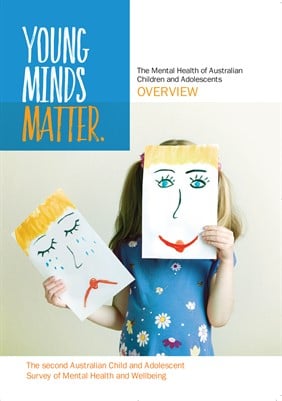By Dr Sarah Johnson
As a parent of two teenage daughters, I like to think I know what's going on in their lives and how they are feeling. I also like to think that they could come and talk to me about anything that was bothering them.
But the largest national survey of youth mental health, conducted by my team at The Kids Research Institute Australia, has forced me to question how much we as parents know. For the survey, we decided to question both parents and young people to see if their results matched up. The short answer is they didn't.
We discovered that many adolescents (aged 11-17 years) thought their parents only 'knew a little' bit or 'not at all' about how they were feeling. This was especially the case for young people experiencing depression, with well over half of this group providing this feedback, compared to about a quarter of those without depression.
We also found that the reporting of depressive symptoms amongst adolescents was quite different according to who you asked - parents or the young person themselves. More young people (7.7%) were found to be depressed when asked directly. However, only 4.7% were depressed based on symptoms reported by parents. Furthermore, there was low agreement when comparing adolescents and their parents - just 2%.
The results made me wonder… If we as parents don't know what's going on, then do their friends, teachers, or other people in their lives? If young people are distressed and don't feel they can turn to their parents, then where can they go? Where do they go?
Both my girls have a big group of friends. They see each other at school, out of school, and stay in touch via their phones and ipads, through snapchat, facetime, interactive games and probably other avenues I don't even know about. In many ways this is great. I never had the tools to stay so connected when I was younger. Friendship and technology seem to be firmly integrated these days.
But is this technology helping or hindering our young people during tough emotional times? Well, our research shows that it can be beneficial. In fact, more than a third of adolescents (aged 13-17 years) with mental disorders reported seeking some kind of information or help online. And the proportion was much higher for females (almost half). This is despite about 90% of parents either saying that their child had not sought information or help online, or that they just didn't know.
From my perspective as a mother, I fully encourage that independent seeking of information and I think it's good to show young people websites like eheadspace and youthbeyondblue. While I hope my children will talk to me if they have emotional struggles, I'm grateful that these websites exist if, for whatever reason, they felt they couldn't. Technology is so integrated into their lives, it makes perfect sense to give them the means to find help in a way that they are comfortable.
At the same time, I want to be sure that I am in touch and keeping the door open for communication. As a fulltime working mum, this is not always easy with the ferrying to and from after school activities, getting dinner, washing clothes, cleaning up and getting ready for the next day before falling asleep on the sofa. Not to mention penetrating the barrier of them being absorbed in devices and chatting with friends.
But being involved in a survey like Young Minds Matter, which shows that so many young people are feeling distressed, has made me very aware of the need to try to make time for a bit of chat every day. I do believe that's what my girls want too. I could be less busy.
The Young Minds Matter survey has provided a critical comprehensive picture of the mental health and wellbeing of Australia's young people today. Most kids are doing well - 86% did not have a mental disorder at the time of the survey and this doesn't seem to have changed from 15 years ago. However, 14% do have disorders (about 560,000 4-17 year-olds).
Giving young people a laptop and the opportunity to go away and answer questions in private about how they were feeling, knowing their parents wouldn't see the answers, was one of the most unique and revealing aspects of the Young Minds Matter Survey. Crunching the numbers and getting initial findings on how many were feeling distressed, depressed and engaging in self-harm came as such a shock to myself and the rest of the survey team that we checked the numbers several times.
Ideally, no child should ever feel distressed and I think it is our collective responsibility to solve this problem. Mental illness can have biological causes but it is also a social problem. Young people need access to enough of the right services at the time that they are needed. Indeed, our survey has shown that more young people with mental disorders are accessing health and school services compared with 15 years ago. As parents we can't know everything about our children but we can stay vigilant, aware and just keep talking.
Dr Sarah Johnson is a Senior Analyst at The Kids Research Institute Australia focussed on parent, child and adolescent mental health, social epidemiology and population-level research.
Information about Young Minds Matter:
Young Minds Matter was a survey of the mental health and wellbeing of Australian children and adolescents. Some 6,310 families with children and adolescents aged 4-17 years participated in the survey, which included a face-to-face diagnostic interview with the parents or carers and a self-report on a tablet computer from 2,967 young people aged 11-17 years.
Read the Young Minds Matter flip book
Watch a video of the main findings below:
< https://vimeo.com/135617040 >
Young Minds Matter Key findings:
- In the face of major societal transformation, the prevalence of most mental disorders has remained stable since 1998. Mental disorders are still common in children and young people - one in seven or 560,000 children in Australia were assessed as having one or more mental disorders in the previous 12 months.
- The number of children and adolescents with Attention-Deficit/Hyperactivity Disorder (ADHD) and conduct disorder has decreased since 1998.
- There has been an increase in the number of adolescents with major depressive disorder. Based on self-reported information, one in thirteen 11-17 year-olds had major depressive disorder. The rate was highest in girls aged 16-17 years, with one in five having major depressive disorder.
- Major depressive disorder had the greatest impact of any disorder, with 42.8% of sufferers experiencing a severe impact on their lives.
- Mental disorders have major impacts on schooling. Those with major depressive disorder had the highest average number of days absent from school (20 days).
- Adolescents are more likely than younger children to suffer from mental disorders with a severe impact.
- Based on their self-reported information, one in five adolescents were estimated to be suffering from high to very high levels of psychological distress.
- One in twelve adolescents aged 12-17 years had self-harmed in the previous 12 months.
- Girls aged 16-17 years experience very high rates of distress, depression, self-harming and suicidal behaviour. Around one in 20 had attempted suicide in the previous 12 months.
- Mental disorders are more common in families already facing other challenges such as unemployment or family breakup.
- The number of children and adolescents with mental disorders who have used services in the health and education sectors has increased substantially from 1998 to 2013-14.
- Just over half (56.0%) of children with mental disorders had used services in the previous 12 months.
- Families of one in five children with a mental disorder, and who reported their child was adversely impacted by the disorder, did not feel their child needed formal help.
- Schools are front line for identifying mental disorders, providing services, and referring children to services.
- Although many families had their service needs met (nearly three quarters), there remained substantial numbers whose needs for help went unmet, either partially or fully.
Research subsite
Visit the site

